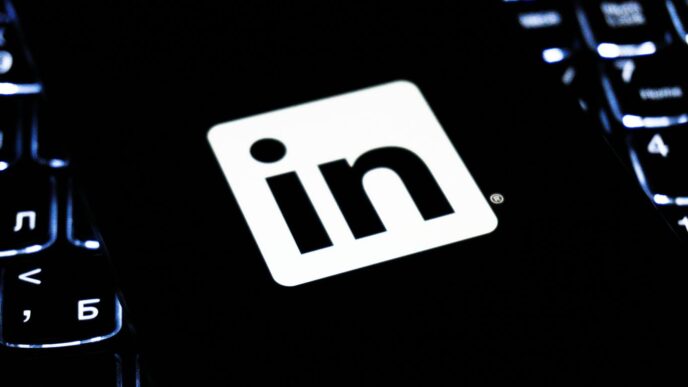Steve Jobs, the co-founder of Apple, was a true visionary whose ideas and approach have shaped the world of technology and entrepreneurship. His journey is filled with valuable lessons that can guide aspiring entrepreneurs. By examining Jobs’ unique perspective, understanding of customer needs, and his relationship with failure, we can uncover insights that may inspire the next generation of innovators. Let’s explore what entrepreneurs can learn from Steve Jobs.
Key Takeaways
- Embrace your individuality and think outside the box to spark innovation.
- Anticipate what customers need before they even realize it, focusing on enhancing their experience.
- Learn from your failures; they can be the stepping stones to success.
Embracing Unique Perspectives in Entrepreneurship

It’s easy to get caught up in what everyone else is doing, especially when you’re starting a business. But think about it: if you’re just copying others, how can you stand out? Steve Jobs was a master at seeing things differently, and that’s a big part of what made Apple so successful. It wasn’t just about making computers; it was about changing how people interacted with technology. So, how can you bring that kind of thinking to your own entrepreneurial journey?
Dare to Think Different
- Question everything: Don’t just accept the way things are done. Ask why. Challenge assumptions. Maybe there’s a better way, a more efficient way, or a completely new approach that no one has considered yet. This is where true innovation begins. It’s about breaking free from conventional wisdom and exploring uncharted territories.
- Embrace your weirdness: What makes you different? What are your unique passions and interests? These aren’t weaknesses; they’re strengths. They give you a perspective that no one else has. Use that to your advantage. Let your personality shine through in your work. People connect with authenticity.
- Look outside your industry: Sometimes the best ideas come from unexpected places. Don’t limit yourself to studying your competitors. Look at other industries, other fields of study, other cultures. You might find inspiration in the most unlikely places. For example, maybe a technique used in architecture could be applied to software development.
Authenticity and Passion
It’s not enough to just think differently; you have to care differently. Steve Jobs was famously passionate about his products, and that passion was contagious. People could feel it, and it made them want to be a part of what he was doing. So, how do you cultivate that kind of authenticity and passion in your own work?
- Do what you love: This sounds cliché, but it’s true. If you’re not passionate about what you’re doing, it’s going to be hard to stay motivated when things get tough. And things will get tough. Choose a business that aligns with your values and interests. Let your enthusiasm drive the development of your products.
- Be true to yourself: Don’t try to be someone you’re not. People can spot a fake a mile away. Be honest about your strengths and weaknesses. Be transparent about your values. People will respect you for it, even if they don’t always agree with you.
- Connect with your "why": What’s the bigger purpose behind your business? What problem are you trying to solve? What impact do you want to make on the world? When you’re clear about your "why", it’s easier to stay focused and motivated, even when you’re facing challenges. This clarity can guide your decisions and keep you focused on your goals.
Understanding Customer Needs Beyond Expectations

Steve Jobs had this knack for knowing what people wanted before they even knew it themselves. It wasn’t about just asking customers; it was about figuring out their needs on a deeper level. It’s like he had a crystal ball, always one step ahead. Let’s explore how entrepreneurs can adopt this mindset.
Predict Customer Needs
Sometimes, asking people what they want just isn’t enough. You’ve got to anticipate what they’ll need in the future. It’s about being proactive and offering solutions they didn’t even realize they were craving. Think about it – did people really know they needed a tablet before the iPad came along? Probably not. Here’s how to get better at predicting those needs:
- Observe, don’t just ask: Watch how people interact with products and services. What are their pain points? What workarounds do they use? Business Model Innovation can come from these observations.
- Look at trends: What’s happening in the world? What technologies are emerging? How might these things impact people’s lives? Understanding these trends can help you anticipate future needs.
- Experiment and iterate: Don’t be afraid to try new things and see what sticks. Get feedback and refine your ideas. It’s all about learning and adapting.
Prioritize User Experience
For Jobs, it always started with the customer. He believed that the user experience was paramount. It wasn’t just about making something that worked; it was about making something that was a joy to use. Here’s how to prioritize user experience:
- Simplicity is key: Make your product or service easy to understand and use. Get rid of unnecessary features and complexity. Think about the customer-centric organization.
- Focus on design: Pay attention to the aesthetics of your product or service. Make it visually appealing and engaging. Design matters, big time.
- Test, test, test: Get your product or service in front of real users and see how they interact with it. Get feedback and make improvements. Never stop testing. This is how you create a high-performance innovation.
Learning from Failure as a Path to Success
It’s easy to look at someone like Steve Jobs and only see the wins, the groundbreaking products, and the massive success. But behind every triumph, there’s a pile of mistakes, missteps, and outright failures. The real lesson isn’t about avoiding failure, it’s about how you handle it. It’s about getting back up, dusting yourself off, and learning something in the process. I think that’s something we can all relate to, right?
Failure as the Only Path to Success
Seriously, think about it. How many times have you actually learned something significant from a success? Probably not as often as you’ve learned from a screw-up. Failure forces you to re-evaluate, to question your assumptions, and to find new approaches. It’s like a harsh but effective teacher. Steve Jobs himself got fired from Apple, the company he started! Can you imagine? But he didn’t give up. He went on to create NeXT and Pixar, and eventually returned to Apple to lead it to even greater heights. That’s resilience right there. Here are some things to keep in mind:
- Embrace the learning opportunity: Each failure is a chance to understand what went wrong and how to improve. Don’t just brush it off; dig in and analyze it. What were the key factors that led to the negative outcome? What could you have done differently?
- Don’t be afraid to fail big: Sometimes, the biggest breakthroughs come from taking big risks. If you’re not failing sometimes, you’re probably not pushing yourself hard enough. It’s like that saying, "Shoot for the moon. Even if you miss, you’ll land among the stars." Or something like that.
- Develop a growth mindset: See failures as temporary setbacks, not as permanent limitations. Believe that your abilities and intelligence can be developed through dedication and hard work. This mindset will help you bounce back from failures and continue to grow as an entrepreneur. It’s all about financial sustainability.
An Unconventional View of Innovation Management
Traditional management often focuses on minimizing risk and avoiding failure. But true innovation requires experimentation, and experimentation inevitably leads to some failures. Steve Jobs wasn’t afraid to challenge conventional wisdom and embrace unconventional approaches. He fostered a culture where it was okay to fail, as long as you learned from it. Here’s how you can apply that to your own business:
- Encourage experimentation: Create an environment where employees feel safe to try new things, even if they might fail. Reward experimentation, not just success. This can be as simple as celebrating failed projects and sharing the lessons learned.
- Iterate quickly: Don’t get bogged down in perfectionism. Launch quickly, get feedback, and iterate based on what you learn. This allows you to fail fast and move on to the next idea. Think of it as personal freedom hacks.
- Question everything: Don’t be afraid to challenge the status quo. Ask "why" repeatedly until you get to the root cause of a problem. This can lead to innovative solutions that others might miss. It’s about predicting customer needs.
Failing can feel tough, but it’s actually a great way to learn and grow. Every mistake teaches us something new that can help us do better next time. Instead of being afraid of failure, we should embrace it as a stepping stone to success. Want to discover more about turning your setbacks into comebacks? Visit our website for tips and inspiration!
Final Thoughts
In wrapping up, it’s clear that Steve Jobs wasn’t just a tech guy; he was a game changer. His lessons about thinking differently, understanding what customers really need, and embracing failure are things every entrepreneur should keep in mind. Sure, he had his ups and downs, but he always pushed through and came out stronger. For anyone looking to make their mark, taking a page from Jobs’ playbook could be the key to unlocking your own potential. So, whether you’re starting a new venture or trying to innovate in your current role, remember: be bold, stay true to your vision, and don’t shy away from failure. That’s where the real learning happens.














